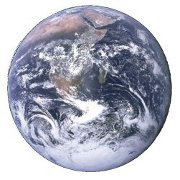
Custom Search
Animals in Bouvet Island
Bouvet Island is located south-southwest of the Cape of Good Hope (South Africa). It is the most remote island in the world. Bouvet Island is in a region of the Antarctic. In the center of the island is a crater filled with ice from an in-active volcano. The habitat is full of rocks and cliffs. Terrain on Bouvet Island is volcanic. Most of the coast is inaccessible. Off the coast of Bouvet Island, the water temperature is very cool and conducive to many oceanic marine mammals.
The terrain of Bouvet Island is perfect for the Macaroni Penguin. Macaroni penguins are the largest of the six species of crested penguins. Bouvet Island provides an excellent home for them. The Macaroni Penguin is a globally vulnerable species.
Macaroni Penguin. Macaroni penguins are the largest of the six species of crested penguins. Bouvet Island provides an excellent home for them. The Macaroni Penguin is a globally vulnerable species.
Several types of seals call Bouvet Island home as well. The Antarctic fur seal,
Antarctic fur seal,  leopard seal, and South Atlantic elephant-seal also reside in and around Bouvet Island. These mammals are currently not at a high risk for extinction.
leopard seal, and South Atlantic elephant-seal also reside in and around Bouvet Island. These mammals are currently not at a high risk for extinction.
 Southern right whales have resided seasonally on Bouvet Island for many years. When these mammals are full grown, they will weigh approximately 99,000 pounds. Southern right whales were considered an endangered species, however are slowly recovering.
Southern right whales have resided seasonally on Bouvet Island for many years. When these mammals are full grown, they will weigh approximately 99,000 pounds. Southern right whales were considered an endangered species, however are slowly recovering.
Southern right whale dolphins can only be found in cool water temperatures. Bouvet Island provides the habitat that these angels of the sea require. There is not enough data to determine whether these spectacular mammals are endangered.
Bouvet Island is rich with animal life, in spite of its harsh terrain and environment. Bouvet Island may be uninhabited by humans, but animals there are alive and well.
The terrain of Bouvet Island is perfect for the

Several types of seals call Bouvet Island home as well. The



Southern right whale dolphins can only be found in cool water temperatures. Bouvet Island provides the habitat that these angels of the sea require. There is not enough data to determine whether these spectacular mammals are endangered.
Bouvet Island is rich with animal life, in spite of its harsh terrain and environment. Bouvet Island may be uninhabited by humans, but animals there are alive and well.
Carnivores in Bouvet Island
Antarctic fur seal Leopard seal South atlantic elephant-sealDolphins, porpoises, and whales in Bouvet Island
Southern right whale Southern right whale dolphin Information about the animals living in Bouvet Island is brought to you by "List of countries of the world", your first stop in discovering all countries and animals of the world.
Information about the animals living in Bouvet Island is brought to you by "List of countries of the world", your first stop in discovering all countries and animals of the world.The animals displayed on this page are grouped in their scientific order. View also countries of the world ordered by:
- List of TLD's
- Country dialling codes
- Population
- Kilometers of coastline
- Square kilometers of land
- Square kilometers of water
- Birth rate
- Death rate
- Irrigated land
- Countries starting with A
Privacy policy